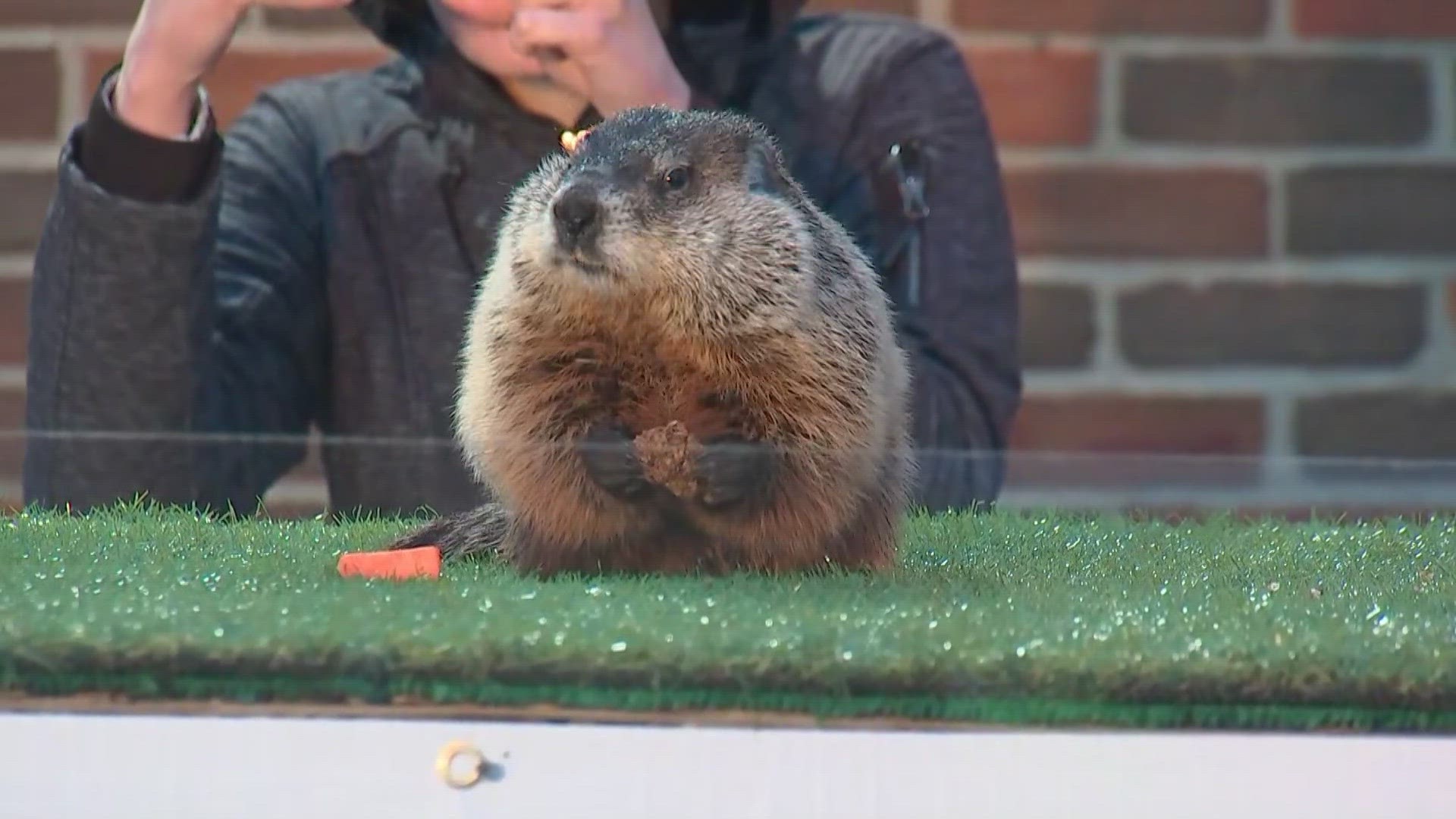MARION, Ohio — Marion's famous groundhog, Buckeye Chuck, predicted that we will have an early spring this year.
The groundhog did not see his shadow Friday morning, meaning Ohio could bring out their short-sleeved shirts a bit early. Punxsutawney Phil also predicted an early spring after not seeing his shadow.
The tradition has been ongoing in the country since 1887 when the residents of Punxsutawney watched Phil, the weather-forecasting groundhog, venture out of Gobbler's Knob.
As part of Ohio's tradition, Buckeye Chuck visits WMRN AM radio station every Feb. 2.
The tradition has been ongoing in the country since 1887 when the residents of Punxsutawney watched Phil, the weather-forecasting groundhog, venture out of Gobbler's Knob.
Where did the tradition begin?
Groundhog Day dates back to a pre-Christian Celtic celebration called "Imbolc" which took place between the winter solstice and the spring equinox, according to the Library of Congress.
People believed that a mythological hag or goddess, Cailleach, associated with storms would predict the end of winter or continuation by what the weather was like that day.
If it was bright and sunny, winter would go on. If the weather was foul, winter was over.
This event was later transformed into Candlemas Day which was when clergy would bless and distribute candles. A bright Candlemas day equated to a long winter season.
From then on, people believed February was important in weather prognostication.
Germans added to the old weather belief by using a badger to predict the weather. If it was sunny, the badger would cast a shadow that meant six more weeks of winter.
After many Germans immigrated to Pennsylvania, a groundhog, native to North America, replaced the badger.

